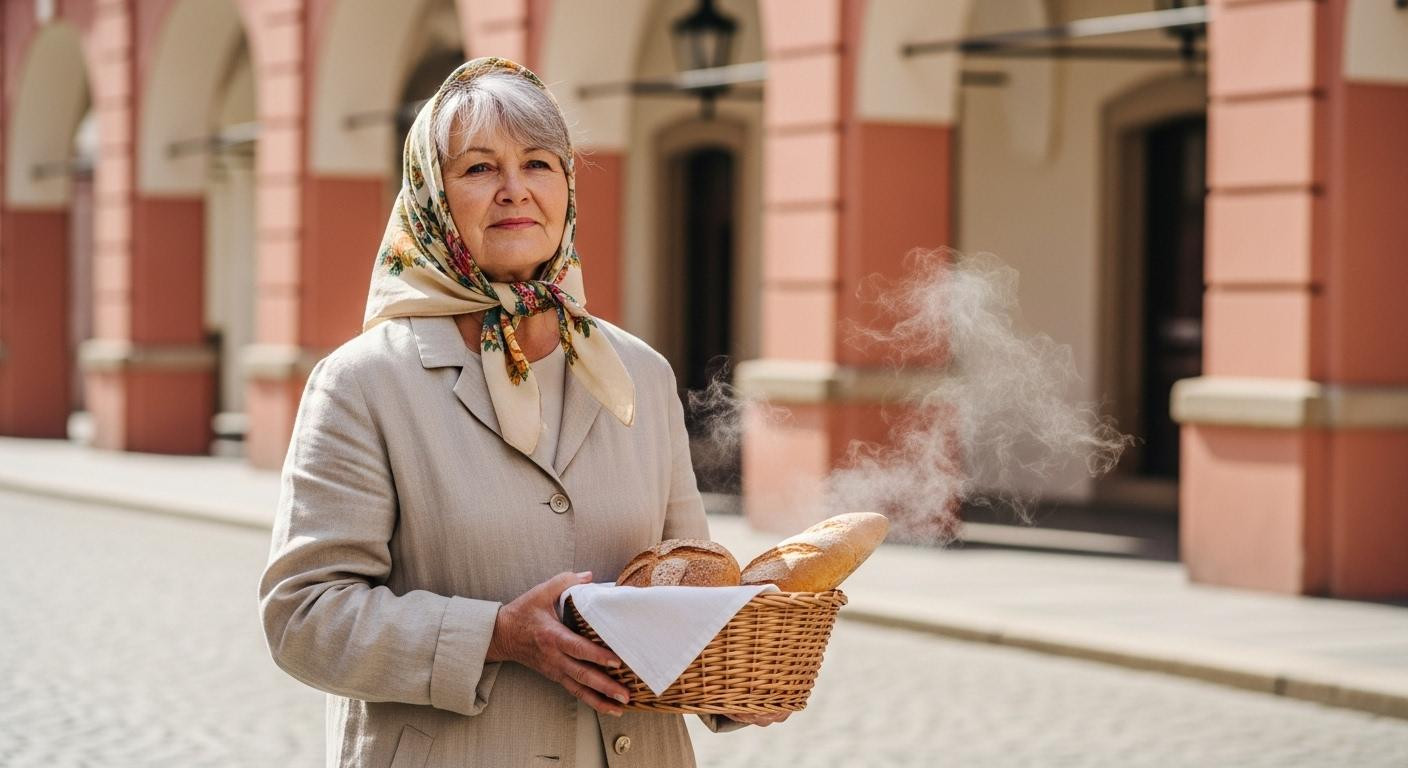At 6:47 AM, golden light touches the Renaissance arcades of Zachariáš of Hradec Square. Steam rises from a grandmother’s coffee cup as she carries fresh bread past salmon-colored facades unchanged since 1530. Church bells echo across empty cobblestones where 5,700 Czech residents protect what over 1 million Český Krumlov tourists never witness. This is Telč, the UNESCO fairy-tale town where morning rituals remain sacred.
The square where time stopped in 1530
Walking into Telč’s main square at dawn feels like entering a Renaissance painting. The elongated rectangle stretches before you, lined with Italian-inspired arcades painted in butter yellow, mint green, and soft rose. A reflecting pond mirrors the Gothic castle rising behind Baroque houses.
Your feet find the herringbone pattern of hand-cut basalt stones dating from the 1530s reconstruction. These cobblestones have worn smooth under centuries of foot traffic. The covered arcades average 9 feet in height, creating shaded walkways where merchants once traded.
Unlike Český Krumlov’s crowded 45-75 minute castle queues, Telč maintains an intimate scale. The square covers roughly 2 acres, small enough to cross in 3 minutes. Yet morning light transforms these proportions into something grand. This 5,000-soul Sardinian village has streets too narrow for cars, creating similar preservation through isolation.
The architecture locals navigate daily
Telč’s fairy-tale quality emerges from unified Renaissance planning. After a devastating fire in 1530, Zachariáš of Hradec established strict building codes. Every new structure required stone foundations, standardized 41-foot gable heights, and harmonious color schemes.
Renaissance arcades and sgraffito details
The facades display intricate sgraffito work scratched into wet plaster. Geometric diamond patterns symbolize protection on House No. 33. Mythological griffins represent the Hradec family crest on House No. 57. These decorative techniques, imported from Italy, create the storybook effect tourists seek.
Gothic castle rising behind baroque houses
Three architectural periods layer visibly in one glance. The 13th-century Gothic castle anchors the composition. Renaissance houses from the 1530s line the square. Baroque modifications from the 1600s-1700s add ornate flourishes. This historical accumulation distinguishes authentic European villages from theme park imitations.
The morning rituals tourists miss
Between 6:30-7:30 AM, locals follow precise routines established over generations. The bakery opens at 5:45 AM for residents only. Fresh bread arrives at 5:15 AM from nearby Jindřichův Hradec. Tourism boards confirm these protected morning hours preserve community identity.
The 7:15 AM café tradition
Authentic establishments serve traditional Czech breakfasts before tour buses arrive at 10:30 AM. Rohlík bread with butter costs roughly $0.65. Coffee with smoked meat and eggs averages $2.85. This 330-soul French hilltop village costs half what Tuscany charges and maintains similar morning café culture.
Artisan workshops behind arcade doors
Czech glassmakers and ceramic artists work in centuries-old spaces during optimal morning light. Traditional techniques preserve Renaissance-era patterns. Hand-blown glass pieces range from $37-96 for authentic work. Tourist souvenirs cost $11-26 but lack historical techniques.
A local artisan explains the morning schedule: “We work early because light reveals subtle color variations. Tourists see finished products but miss the creation magic happening while town awakens.”
The silence Český Krumlov lost
Český Krumlov receives 1.2 million annual visitors versus Telč’s 187,345. The difference transforms daily experience. Český Krumlov’s narrow streets pack with tour groups by 9 AM. Castle queues stretch 45-75 minutes during peak season.
Telč maintains 8-12 minute castle wait times even in October. Accommodation occupancy reaches 68% on weekdays versus Český Krumlov’s 92%. These 10 clifftop villages cost half what Santorini charges and have no crowds demonstrates similar preservation through managed tourism.
Morning mist rises from historic fish ponds at 8:30 AM as first tour buses reach the square’s edge. The 5,700 residents retreat to routines tourists rarely photograph. This protected rhythm defines authentic Czech village life.
Your questions about Few know this Czech village looks exactly like a fairy tale answered
How do I get to Telč from Prague?
Direct trains depart Prague at 6:02 AM, arriving Telč at 8:27 AM. The 106-mile journey costs $11.35 without reservations. Cars take 2 hours 15 minutes via D1 highway to exit 81. These 10 under-the-radar U.S. villages cost half what popular destinations charge using similar transportation timing strategies.
What makes these villages feel like fairy tales?
Unified Renaissance architecture creates the storybook effect. Zachariáš of Hradec studied in Italy and imported architectural harmony. Pastel facades, reflecting ponds, and cobblestone streets maintain 1530s proportions. The absence of modern intrusions preserves time-capsule authenticity.
Is Telč less crowded than Český Krumlov?
Significantly less crowded with 6.4 times fewer annual visitors. October weekdays average 820 visitors versus weekends at 1,240. Český Krumlov sees 92% weekday accommodation occupancy while Telč maintains 68%. Authentic experiences cost $81-118 daily versus tourist-oriented $109-166.
Morning mist lifts from Telč’s fish ponds as tour buses arrive at 9:15 AM. The grandmother finishes bread delivery, glassmakers complete morning pieces, and residents disappear into protected routines. The fairy tale exists in hours they guard, in light they understand, in silence they preserve.
